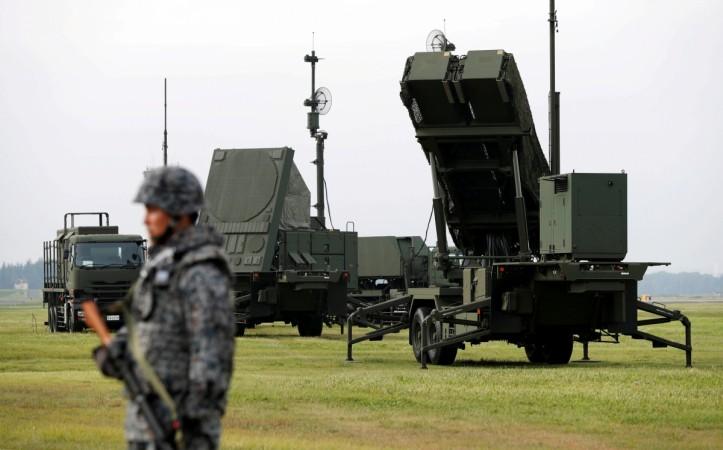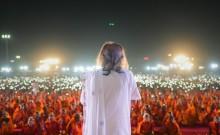
Japanese pacifism and the changes it has undergone over the years have been closely watched in the region in the backdrop of the rising Chinese might and the Dragon's increasing military assertion in East and South China Seas.
While Japan is in the throes of a divisive debate over the future of its eternally pacifist constitution, China, on the other hand, is flexing military muscles as never before. President Xi Jinping appeared in camouflage military fatigues at his country's biggest ever naval drill in South China Sea on Thursday. Speaking from Chinese destroyer Changsha, Xi said China's naval prowess will be enhanced further. The massive PLA drill showcased China's aircraft carrier Liaoning as well as the J-15 stealth fighter jets.
Meanwhile in Japan, Prime Minister Shinzo Abe's push for slightly altering the pacifist constitution has reached an inflection point. He is the only leader to have ever taken that push this far. His coalition has the required two-thirds majority in both houses of parliament. A two-thirds majority is mandatory for successfully proposing a constitution amendment. Once this hurdle is cleared, the proposal goes to a country-wide referendum.
It should be noted that the Japanese constitution has not been changed in its more than 70-year history.
Article 9 of Japan's post-war, US-drafted constitution forecloses the right to wage war and forbids the keeping of a standing military. That means the country's Self Defence Forces (SDF) is legally unconstitutional. Prime Minister Abe says he doesn't want to remove the aforementioned clauses of the charter but wants to include a reference on the SDF so that it becomes a legal entity.
Sins of past militarism
However, such a minor change in the constitution is unlikely to carry through. That's quite surprising, despite the fact that the Japanese pacifism is well-entrenched, rising as it did from the nuclear devastation of Hiroshima and Nagasaki. The Komeito party, the minor partner in Abe's ruling coalition whose support base is among pacifist Buddhists, is unlikely to go along with Abe on this. Various opinion polls also suggested that amendment to Article 9 will be hard to win majority support in a referendum.
The future of Article 9 aside, Japanese pacifism underwent another of the periodic tinkerings this week when Japan activated an amphibious combat unit for the first time since the end of World War II. The Amphibious Rapid Deployment Brigade has a decidedly action-oriented nature as against the defensive tasks ascribed to the SDF. The unit is tasked with the key wartime function of retaking territory lost to enemies.
Whether a constitution amendment will take place under the watch of nationalist Abe is a matter of conjecture, even as his prospects for re-election to a third 3-year term has hit roadblocks in recent times. But what does make sense is that more Japanese are veering round to the idea that total pacifism doesn't answer to the challenges of the times.
As a nation Japan has atoned for the sins of its past militarism. In the emerging security scenario in the Asia Pacific, Japan cannot afford to hide behind the veneer of a deemed 'illegality' of its military. At a time of charged up maritime tensions in its neighborhood even human errors can trigger military misadventures. It's only fitting that Japan's defense forces should have the legal sanctity as it may have to operate under duress to protect the nation's sovereignty.
If Abe fails in this effort, it's hard to fathom who will take Japan there, if ever. It was under Abe that Japan ended a ban on its armed forces operating abroad in 2014. This move, which authorized lending military support to a friendly country under attack, sort of ended Japan's military seclusion. Here's a look at major watersheds in Japan's journey on the pacifist route:
Post-war seclusion
The post-war constitution limited the use of force only as a means of self-defense. Japan would refrain from using force to resolve international conflicts. This policy ruled out military alliances and intervention in regional military conflicts.
Cold War priorities
In the early 1950s the US nudged Tokyo to 're-arm' as it looked to bolster its position during the Cold War. As the Korean War erupted the US withdrew its forces from Japan, leaving the country with no military to protect itself from any possible invasion. Then, under the behest of the US, a 75,000-strong National Police Reserve (NPR) was formed in Japan to fill the military vacuum.
From NPR to SDF
When Mao Zedong and the communists vanquished Chiang Kaishek in mainland China, the regional balance, and Japan's security dynamics, changed forever. The US wanted a greater military role for Japan at this point but Prime Minister Yoshida initially resisted the pressure. But eventually in 1952 a new National Safety Agency was set up.
This agency became Japan Defence Agency or the Ministry of Defence, which would replace the National Police Reserve. Eventually in 1954, the Japan Self-Defense Forces was set up.
Nixon's pressure
In the 1970s US President Richard Nixon renewed US pressure on Japan to assume bigger regional role. In 1983, Prime Minister Yasuhiro Nakasone wanted to make an 'unsinkable aircraft carrier' triggering protests.
Increasing military spending
Under Nakasone, Japan breached for the first time the de-facto military spending limit of less than 1 percent of GDP. Nakasone also cut a new path, allowing the export of military hardware to the US. In the 1990-91 Gulf War, Japan spent $13 billion but the lack of active participation raised questions over the military's preparedness in strategic intervention.
North Korean threat
Japan initiated a plan to build a ballistic missile defence system (BMD) with US cooperation after the 1998 North Korea missile tests. In 2003 Prime Minister Junichiro Koizumi proclaimed BMD a national priority.
War on terror
In 2001, in a minor yet symbolic departure from the stance during 1990-91 Gulf War, Koizumi decided to support America's war on terror following the 9/11 al-Qaeda attack, by sending forces to the Indian Ocean.
Calls for charter change
In 2007, marking the 60th anniversary of the Japanese Constitution, Prime Minister Shinzo Abe called for a "bold review" of the charter that paved the way for Japan's greater role in regional and global security.









